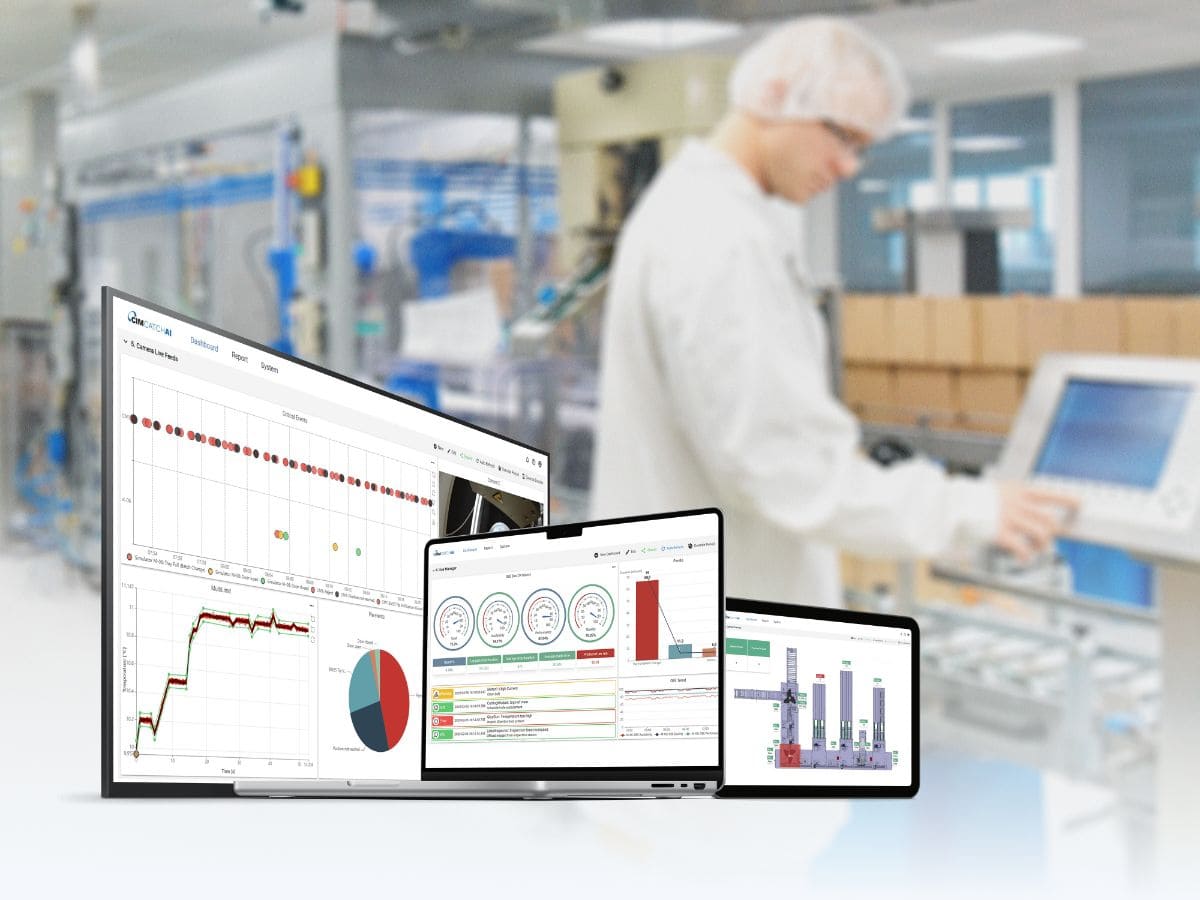Predictive maintenance based on machine data
The more complex production machines get, the harder it is to figure out how to optimize them. This customer turned to data for more insights.

“If you just want OEE data, CATCH.AI is way too complex. But if you’re looking for deeper insights into WHY the machine is not performing well and where to improve it, CATCH.AI is the right system.”
Director of Engineering, market-leading global manufacturer of medical devices for infusion care
The challenge
The customer wanted to be able to improve machine performance by taking the right actions at the right time instead of wasting resources on scheduled preventive maintenance. But the more complex production machines get, the harder it is to figure out how to optimize them.
“20 years ago, the mechanics of a machine were pretty straightforward and visible. Whereas now, it’s all electronics, servos and things communicating within the machine that you can’t understand just by looking at it. So when it stops, it’s not easy figure out why”, says the Director of Engineering.
Ready for predictive maintenance
See what the customer has to say about CATCH.AI and the road to predictive maintenance
According to the customer's Director of Engineering, the trouble with an OEE system is that it relies completely on user input. The system itself only registers whether it’s running or not. Then it’s up to the operator to determine why it’s not running.
So, there was no doubt in his mind that it would require a different kind of system to turn their ambitions into reality.
But while there is a lot of talk about smart factories and manufacturing intelligence, real solutions are few and far apart. The Director of Engineering puts it this way:
“I mean, we’ve all attended hundreds of lofty Industry 4.0 presentations about some idealized future. But I had yet to see something that actually worked. So that’s what got me hooked. A system that could deliver on some of the promises made in all those presentations and sales meetings.”
In connection with the implementation of a new production line in 2020, the customer set out to automate data collection on machine performance. The idea was to provide operators with insights into machine performance without them having to enter a lot of data themselves.
As supplier of the vision inspection system, CIM was already working on the new line and one conversation about the potential of data led to another.
Soon, the customer decided to pivot from their original idea towards a smart data platform that can do much more than visualizing performance data.
The customer wanted a deeper understanding of machine performance. And, even more importantly, to be able to improve that performance by taking the right actions at the right time.
But according to the customer’s Director of Engineering, this is perhaps more difficult than ever. As production lines and machines become increasingly complex, it gets harder for operators and technicians to identify stop causes and to understand the inner workings of a machine.
“20 years ago, the mechanics of a machine were pretty straightforward and visible. Whereas now, it’s all electronics, servos and things communicating within the machine that you can’t understand just by looking at it. So when it stops, it’s not easy figure out why.”
Consequently, improving the performance of a complex machine hinges on accurate data and insights.
Once the project began, the first step was to collect all alarms and counters and correlate alarms and events with OEE.
Since then, process data from welding and vision inspection stations has been added to the mix. Next steps include data-based decision support for operators and technicians.
The Director of Engineering hopes that this will bring the company closer to the ultimate goal of predictive maintenance instead of potentially wasting time and resources on scheduled preventive maintenance as is the case today.
Essentially, the customer's ambition is to go from knowing how the machine performs to understanding why it stops and what can be done to improve uptime.
And they have made progress in this respect. In some cases, it has been possible to see a trend in the data leading up to a stop. This has provided a better understanding of stop causes.
The the ambition is to monitor this kind of data in the future to be able to take preventive measures and avoid stops altogether.
The project aimed at giving production management insights into performance that is not dependent on potentially faulty input from inexperienced operators.
This not only benefits production management. Operators can avoid more administrative work – something of which the medical device and pharma industries offer plenty as it is.
“If we can automate, we should automate. The result will be more reliable, and we can let operators do what they do best and much prefer: Operate the machine. Not have them stuck in front a computer entering data”, says the customer’s Director of Engineering.
Based on the learnings so far, the Director of Engineering has a few suggestions for other manufacturers about to embark on their own digitalization journey.
First, be clear about what your ambitions are!
“If you just want OEE data, CATCH.AI is way too complex. But if you’re looking for deeper insights into WHY the machine is not performing well and where to improve it, CATCH.AI is the right system”, he says.
Secondly, invest enough time and the right resources.
You need someone who knows your processes to work with the data and ensure that the system keeps learning. And buy-in from production is crucial.
Working closely with machine builders is crucial for production companies. The Director of Engineering puts it this way:
“Production lines will only become more complex in the future, so data collection should be part of the package right from when the machine is designed”, he says.
It's also important to choose a data platform supplier with a partner mindset.
Being new to working with data, the close collaboration with CIM has made it easier for the customer to keep moving ahead, even when the road was bumpy.



